Pinterest Traffic Secrets: How I Grew My Blog to 50K Monthly Visitors
Discovering the power of Pinterest was a game-changer for my blog’s traffic. A friend’s success story sparked my curiosity, and I began exploring ways to leverage this platform. What struck me was how my daughter, like many others, uses Pinterest as a search engine, seeking solutions and inspiration.
I was determined to tap into this vast audience. By understanding Pinterest’s unique algorithm and creating content that resonated with users, I achieved remarkable results. In just a month, my blog went from zero to a new visitor every minute.
This transformation wasn’t accidental. It was the result of strategic planning and execution. In this article, I’ll share the exact steps I took to grow my blog’s traffic to 50,000 monthly visitors, and how you can replicate this success.
Key Takeaways
- Understand how Pinterest functions as a search engine.
- Learn how to optimize your content for Pinterest’s algorithm.
- Discover the importance of creating pin-worthy content.
- Find out how to leverage Pinterest for long-term traffic.
- Implement strategies to tap into Pinterest’s vast user base.
My Pinterest Journey: From Zero to 50K Monthly Visitors
The moment I understood Pinterest’s power, I shifted my strategy to capitalize on it. I had been focusing on traditional social media channels, but I realized that Pinterest offered a unique opportunity to drive traffic to my blog. This realization marked the beginning of my Pinterest journey.
Why I Decided to Focus on Pinterest
Initially, I was skeptical about Pinterest’s potential for my niche. However, upon further exploration, I discovered that Pinterest users were actively searching for the content I was creating. This was a turning point for me. I began to understand that Pinterest wasn’t just a social media platform; it was a search engine with a vast user base looking for specific content. I decided to pivot my traffic strategy toward Pinterest, believing it could transform my blog’s visibility.
- Pinterest offered a vast, untapped potential compared to other social media platforms.
- I found that users on Pinterest were actively searching for content related to my niche.
- Focusing on Pinterest allowed me to tap into a new audience, increasing my blog’s visibility.
The Results: A New Visitor Every Minute
Within just 30 days of implementing my Pinterest strategy, I started seeing a dramatic increase in traffic. I went from zero Pinterest traffic to gaining a new visitor every minute in one month’s time. My page views skyrocketed from 0 to 4,000,000, a number that continues to grow. This surge wasn’t just about vanity metrics; it translated into tangible results such as email subscribers, product sales, and affiliate commissions.
The success I experienced on Pinterest was not limited to the immediate traffic boost. It also opened up long-term opportunities for my blog, establishing it as a significant source of traffic and revenue. By focusing on Pinterest, I was able to diversify my traffic sources, reducing my dependence on other social media platforms.
Setting Up Your Pinterest Business Account for Success
A well-configured Pinterest business account is the foundation upon which successful Pinterest marketing strategies are built. To leverage Pinterest’s full potential for driving traffic to your blog, you need to set up your account correctly.
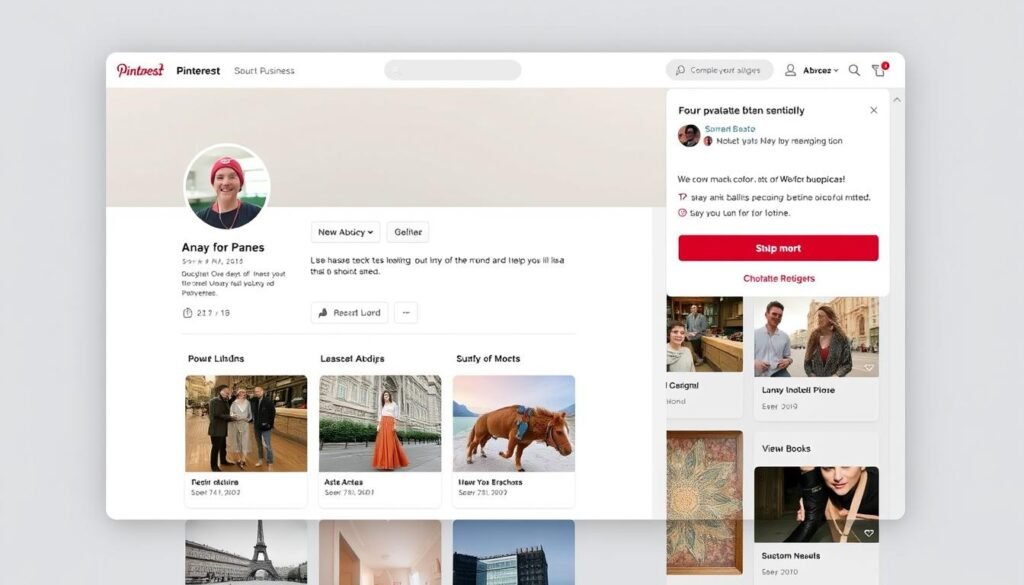
Converting to a Business Account
Converting your personal Pinterest account to a business account is a straightforward process that unlocks numerous benefits for bloggers. By switching to a business account, you gain access to valuable analytics and features that help you understand your audience better and optimize your content strategy. The process is completely free and takes less than five minutes.
Verifying Your Website
Verifying your website with Pinterest is essential for building trust with the platform and unlocking additional features that help drive traffic to your blog. To verify your website, you need to add your website URL to your Pinterest profile and confirm your website. This step is crucial for ensuring that your website is associated with your Pinterest account, enhancing your credibility and the security of your pins.
Enabling Rich Pins
Enabling Rich Pins is perhaps the most important technical setup for serious Pinterest marketers. Rich Pins automatically pull metadata from your blog posts to create more compelling, information-rich pins that stand out in Pinterest feeds. To enable Rich Pins, you first need to ensure that your website supports them. If you use the Yoast SEO Plug-in, you’re already set. You can then validate that you have Rich Pins enabled and submit your site to Pinterest. Rich Pins come in different types, including article, product, and recipe pins, allowing you to choose the most relevant type for your blog niche.
By following these steps, you’ll not only have a properly configured business account but also gain access to Pinterest Analytics, which provides crucial data for optimizing your strategy. A well-set-up Pinterest business account, combined with Rich Pins, significantly enhances your blog’s visibility and click-through rates on the platform.
Creating a Strategic Board Structure
Creating a strategic board structure is the foundation of a successful Pinterest marketing strategy. Your Pinterest boards serve as the backbone of your profile, and organizing them effectively is crucial for attracting and engaging your target audience.
Determining Your Core Topic Boards
To start, you need to determine your core topic boards. These boards should align with your blog’s content categories and your audience’s interests. Begin by identifying the main topics you cover on your blog, and then create boards that correspond to these topics. For example, if you run a lifestyle blog, you might create boards for fashion, home decor, and travel. The key is to create boards that are relevant to your niche and will appeal to your target audience.
When deciding on the number of boards to create, remember that quality is more important than quantity. Start with a manageable number of boards, and then expand strategically as your content library grows. A good rule of thumb is to begin with 5-10 boards and adjust from there based on your audience’s engagement.
Optimizing Board Descriptions for SEO
Once you have created your core topic boards, it’s essential to optimize your board descriptions for SEO. This involves including relevant keywords in your board descriptions to help your boards rank higher in Pinterest search results. Think of Pinterest as a search engine with images, and you want your boards to appear in those listings. A good SEO strategy is to edit the description of each board to include what your board is about and the keywords you’d like it to rank for.
| Board Topic | Keyword(s) | Description |
|---|---|---|
| Fashion | fashion trends, clothing | Stay up-to-date with the latest fashion trends and must-have clothing items. |
| Home Decor | home decor, interior design | Get inspired by our curated collection of home decor ideas and interior design tips. |
| Travel | travel destinations, travel tips | Explore new travel destinations and get expert travel tips to make your next trip unforgettable. |
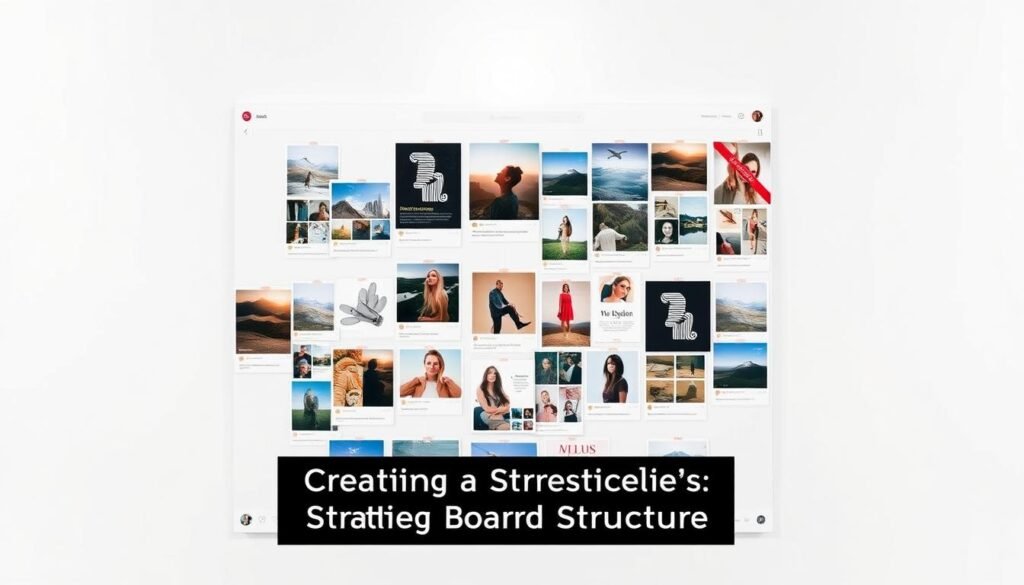
By optimizing your board descriptions and using relevant keywords, you can improve your visibility in Pinterest search results and attract more followers to your profile. Remember to keep your descriptions concise and informative, and make sure they align with your overall content strategy.
Pinterest Traffic Secrets: How I Grew My Blog to 50K Monthly Visitors
As a seasoned blogger, I’ve discovered that Pinterest’s success stems from its nature as a search engine, not just a social media platform. This understanding has been pivotal in my journey to growing my blog to 50K monthly visitors.
The Pinterest Search Engine Advantage
Pinterest functions primarily as a visual search engine, differing significantly from traditional social media platforms. This distinction is crucial because it means users are actively searching for content, making it easier for bloggers to gain visibility. The Pinterest search engine advantage includes a longer content lifespan, with pins continuing to drive traffic for months or even years after they’re posted.
- Pinterest’s search algorithm provides unique opportunities for content creators to gain visibility.
- The platform’s visual nature allows blogs in virtually any niche to gain traction, even in competitive markets.
- Pinterest users are actively searching for solutions, ideas, and inspiration, making the traffic particularly valuable.

Understanding Pinterest User Intent
Understanding the intent behind Pinterest users’ searches is vital for creating effective content. Unlike social media users who often passively consume content, Pinterest users are actively seeking inspiration, solutions, or expert advice. By recognizing this, bloggers can tailor their content to meet the specific needs and search intent of their audience.
- Pinterest users have different intent than social media users, actively searching for content.
- Understanding seasonal patterns of Pinterest searches helps in planning content that aligns with user needs throughout the year.
- The psychology of Pinterest users is unique, and creating content that meets their needs is crucial for success.
By leveraging Pinterest’s search engine advantage and understanding user intent, bloggers can significantly increase their blog traffic and reach a wider audience.
Creating Pinterest-Optimized Images That Convert
Creating Pinterest-optimized images that convert requires a blend of art and science. With the right strategy, you can significantly boost your blog traffic.
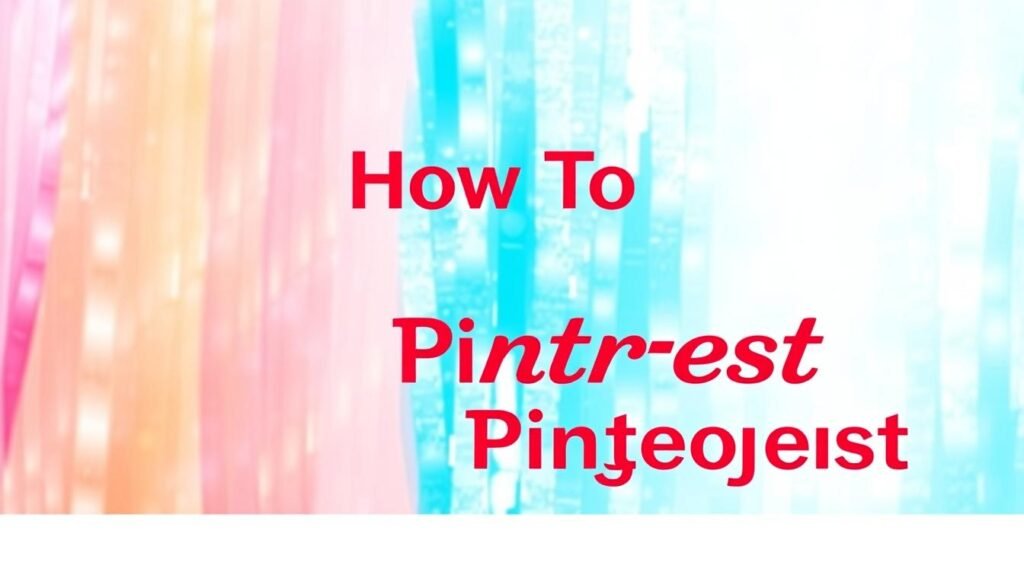
Ideal Image Sizes and Ratios
The ideal image size for Pinterest is 735 x 1102 pixels, which is a vertical format optimized for the platform. Using this size ensures that your images are clear and visually appealing on both desktop and mobile devices.
Maintaining the right aspect ratio is crucial. A 2:3 or 1:2.1 ratio is recommended for the best display.
Design Elements That Attract Clicks
To create engaging pins, focus on color psychology, font pairings, and image composition. Vibrant colors and easy-to-read fonts can significantly enhance the appeal of your pins.
Text overlay is a critical component. Craft headlines that generate curiosity and drive clicks. Use action-oriented language and questions to pique the interest of potential readers.
Tools for Creating Stunning Pins
Several tools can help you create professional-looking pins without extensive design experience. Stencil is a favorite tool, offering a free version and access to over 1 million royalty-free photos.
Other tools like PicMonkey can also be useful, although they may not be free. Experimenting with different tools will help you find what works best for your brand.
Implementing a Powerful Pinterest SEO Strategy
Implementing an effective Pinterest SEO strategy can significantly boost your online visibility. A well-optimized Pinterest presence helps your content reach a wider audience, driving more traffic to your blog. To achieve this, it’s essential to understand the nuances of Pinterest SEO and how it differs from traditional SEO.
Keyword Research for Pinterest
Pinterest is not just a platform for sharing visuals; it’s also a powerful search engine. When users enter a broad term into the search bar, Pinterest auto-fills a list of common searches within that niche. This feature is incredibly useful for conducting keyword research. By leveraging Pinterest’s search functionality, you can identify high-opportunity keywords with strong search volume but manageable competition. To do this effectively, use the platform’s guided search feature to reveal valuable long-tail keyword opportunities that might be missed through traditional keyword research.Key steps in Pinterest keyword research:
- Use Pinterest’s search bar to find common searches related to your niche.
- Identify long-tail keywords using the guided search feature.
- Analyze the competition for your target keywords.

Optimizing Pin Descriptions and Alt Text
Once you’ve identified your target keywords, it’s crucial to incorporate them strategically into your pin titles, descriptions, and the alt text of images on your blog. When writing pin descriptions, use different verbiage from the title and meta description to maximize the visibility of your Rich Pins. Remember to add keyword-rich descriptions to the “Alternative Text” when adding your graphic for Pinterest to your blog post.Best practices for optimizing pin descriptions and alt text:
- Use relevant keywords in pin titles and descriptions.
- Write unique alt text for images that includes target keywords.
- Ensure descriptions are concise and compelling.
Using Hashtags Effectively
Hashtags on Pinterest can be a powerful tool for increasing your content’s discoverability. However, their strategic use is often misunderstood. To use hashtags effectively, you need to understand how many to use, which ones work best, and where to place them. A general rule of thumb is to use a mix of niche and broad hashtags to attract both targeted and wider audiences.Tips for using hashtags on Pinterest:
- Use a mix of niche and broad hashtags.
- Limit the number of hashtags to avoid looking spammy.
- Place hashtags at the end of your pin descriptions.
By implementing these strategies, you can significantly enhance your Pinterest SEO, driving more traffic to your blog and increasing your online visibility.
Automating Your Pinterest Marketing
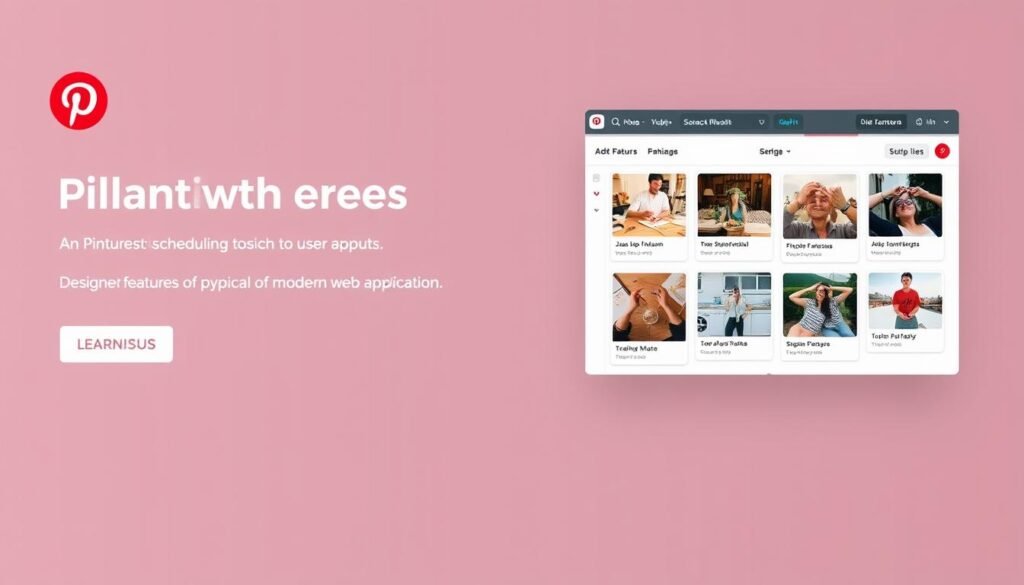
As a blogger, I’ve found that automating Pinterest marketing saves time and boosts engagement. By leveraging the right tools and strategies, you can maintain a consistent online presence without sacrificing quality.
Consistent, strategic pinning is essential for Pinterest success, but manually pinning multiple times per day is unsustainable for most bloggers. That’s where automation comes in – it helps you stay on top of your pinning strategy without the manual labor.
Scheduling Pins with Tailwind
I use Tailwind to schedule my posts at optimal times when Pinterest is the busiest. This tool allows me to plan my content in advance, ensuring that my pins are posted consistently throughout the day.
With Tailwind’s Chrome extension, I can schedule pins directly from Pinterest or my website. Whenever I add a new post or update old posts, I share the graphic directly to Pinterest, then use that pin for Tailwind so it’s repinned. This process has significantly improved my engagement rates.
Creating a Consistent Pinning Schedule
To maximize your Pinterest presence, it’s crucial to maintain a consistent pinning schedule. This involves determining the optimal pinning frequency for your account based on your content volume and niche competitiveness.
Using Tailwind’s SmartSchedule feature, you can automatically pin at times when your specific audience is most active. This not only saves time but also ensures that your pins reach the maximum audience, thereby enhancing your overall marketing strategy.
By batching pin creation and scheduling, you can save hours of time each week while maintaining a strong Pinterest presence. It’s also essential to track which scheduled pins perform best and use that data to refine your automation strategy over time.
Expanding Your Reach Through Group Boards and Tribes
Group boards and Tailwind Tribes are powerful tools for growing your audience on Pinterest. By leveraging these collaborative platforms, you can significantly expand your reach beyond your own follower base.
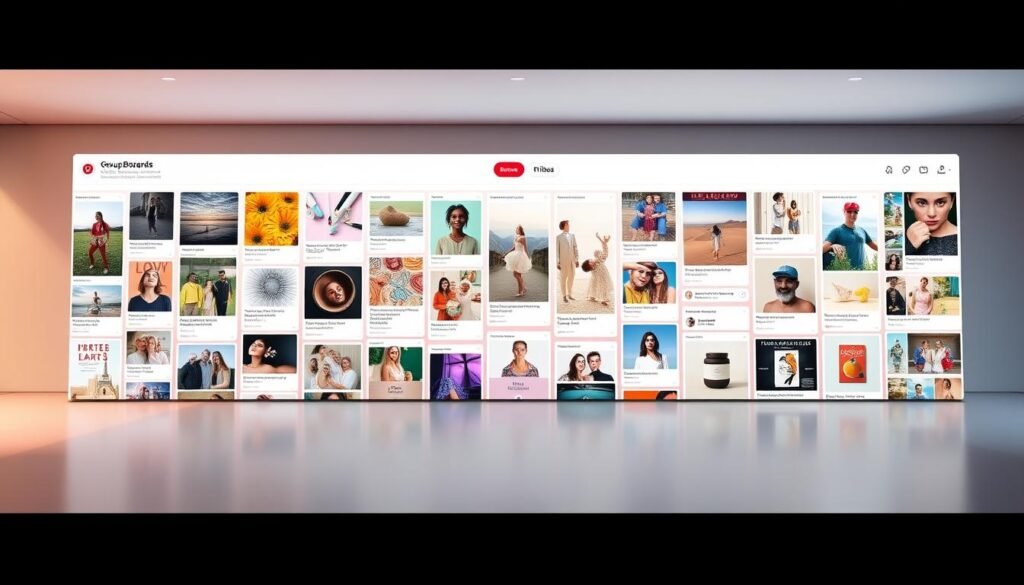
Finding and Joining Relevant Group Boards
To maximize your Pinterest marketing strategy, it’s crucial to find and join relevant group boards in your niche. Tools like PinGroupie can help you discover high-performing group boards. When searching manually, look for boards with a clear description and a significant number of contributors. Some group board owners provide instructions on how to contribute in the board description, such as emailing them or filling out a form.
When reaching out to group board owners, having a clear and concise message can increase your acceptance rate. Be sure to introduce yourself, explain why you’re a good fit for the board, and highlight the value you can bring. It’s also essential to evaluate potential group boards based on engagement metrics rather than just follower counts, ensuring you’re investing your time wisely.
Leveraging Tailwind Tribes for Exponential Growth
Tailwind Tribes offer another avenue for expanding your Pinterest reach. Similar to group boards, Tribes allow you to share your content and engage with others in your niche. One of the key benefits of Tribes is that they often provide even better engagement for many content creators compared to traditional group boards.
To get the most out of Tailwind Tribes, focus on being a valuable contributor by sharing high-quality content and engaging with others’ pins. Balancing your time between your own boards, group boards, and Tribes is crucial to maximize your reach without spreading yourself too thin. As you establish authority in your niche, consider creating your own group boards or Tribes to further amplify your Pinterest presence.
Conclusion: Turning Pinterest Views Into Blog Traffic and Revenue
My experience with Pinterest has shown me that with the right strategy, it’s possible to turn views into tangible results for your blog.
To achieve this, focus on converting Pinterest views into blog traffic, email subscribers, and ultimately revenue. By implementing the strategies outlined in this guide, you can drive traffic and grow your business.
Capture email addresses from Pinterest visitors and monetize your traffic through various revenue streams. Analyze your Pinterest analytics alongside your blog analytics to identify top-performing content and adjust your strategy accordingly.
FAQ
What are the benefits of using a business account on Pinterest?
How do I optimize my Pinterest boards for search engine optimization (SEO)?
What is the ideal image size for Pinterest pins?
How can I increase my Pinterest followers and engagement?
What is the role of keyword research in Pinterest marketing?
Can I schedule my Pinterest pins in advance?
How do I measure the success of my Pinterest marketing efforts?
editor's pick
latest video
news via inbox
Nulla turp dis cursus. Integer liberos euismod pretium faucibua




